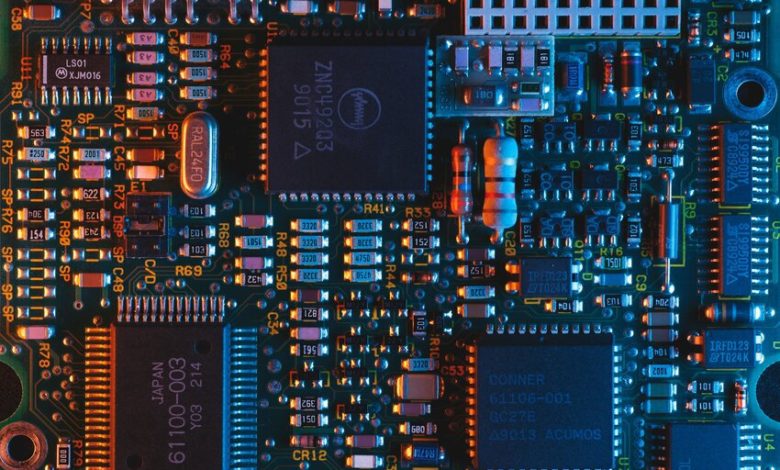Intel’s Struggles Demand an Activist Investor Defense Mechanism: A Closer Look at the Crisis

Intel Corporation (NASDAQ:INTC), once the unrivaled leader in the semiconductor industry, is now grappling with a series of significant challenges that have culminated in a sharp decline in its stock price. The company’s recent struggles have prompted discussions around the need for an activist investor defense mechanism, as Intel faces mounting pressure from shareholders and the broader market. The backdrop of this situation includes a class-action lawsuit filed by shareholders who accuse Intel of concealing critical issues within its foundry business, leading to weaker earnings, massive job cuts, and the suspension of dividends. Amidst these woes, the company’s partnership with Morgan Stanley to fend off potential activist investors highlights the gravity of the situation. As Intel attempts to navigate these turbulent waters, it must confront the core issues plaguing its operations, market position, and strategic direction.
Deteriorating Financial Performance
Intel’s financial performance has been on a downward spiral, exacerbating the need for an activist investor defense. The company's recent earnings call revealed disappointing results, with profitability falling short of expectations despite attempts to improve cost efficiency. Intel’s revenue for the second quarter was $12.8 billion, a modest 1% sequential increase, but it was the gross margin that raised alarm bells. At just 38.7%, the gross margin reflected the severe impact of the accelerated ramp of Intel’s Core Ultra AI CPUs and other strategic decisions that led to higher-than-anticipated costs. The company’s ongoing transition to new manufacturing processes has also added pressure, with significant capital expenditures required to bring its Ireland facility online. This has resulted in Intel being forced to cut its workforce by 15% and suspend its dividend to conserve cash. These drastic measures are indicative of deeper structural issues within Intel, where the costs of maintaining competitiveness have outpaced the company’s ability to generate profitable growth. The combination of lower profitability, high capital expenditures, and reduced dividends has shaken investor confidence, making Intel vulnerable to activist interventions.
Lagging Behind Competitors in AI and Advanced Technologies
Intel’s inability to keep pace with competitors in the AI and advanced technology sectors is another critical driver necessitating an activist defense strategy. While NVIDIA and AMD have surged ahead in the AI space, Intel has been left scrambling to catch up. The company’s recent focus on developing AI infrastructure and its ambitious roadmap, which includes the launch of products like Panther Lake and Clearwater Forest, has yet to yield significant competitive gains. Intel’s market share in key areas, such as AI and data center processors, has stagnated, with the company struggling to win back lost ground. Despite its efforts to accelerate product development and bring new technologies to market, Intel has been consistently outperformed by its rivals. The gap in competitiveness has been particularly stark in the AI hardware market, where NVIDIA’s GPUs have become the industry standard. Intel’s late entry into this space and the mixed reception of its AI products have raised concerns about the company’s ability to regain leadership. This competitive lag, combined with Intel’s high investment in new technologies that have yet to prove profitable, makes the company an attractive target for activist investors looking to push for strategic changes.
Strategic Missteps and Management Challenges
Strategic missteps and management challenges have further weakened Intel’s position, increasing the likelihood of activist investor involvement. Intel’s management has faced criticism for its handling of the company’s transition to a new operating model, which includes the separation of Intel’s product and foundry businesses. While this move was intended to streamline operations and improve efficiency, it has also exposed inefficiencies and a lack of clear strategic direction. The decision to shift manufacturing to Ireland and the subsequent impact on margins have highlighted the difficulties Intel faces in executing its strategy effectively. Additionally, Intel’s struggles in the AI and advanced technology sectors can be traced back to management decisions that failed to anticipate the rapid growth of these markets and the need for more aggressive investment in R&D. The recent departure of board members and the involvement of Morgan Stanley to fend off potential activist investors further underscore the internal turmoil at Intel. As the company grapples with these strategic and management challenges, it becomes increasingly clear that a more focused and cohesive strategy is needed—something that activist investors may push for if given the opportunity.
Market and Legal Pressures
Intel is also facing significant market and legal pressures that justify the need for an activist defense mechanism. The semiconductor industry is highly competitive, and Intel’s recent underperformance has left it vulnerable to market share losses. The company’s struggles have not gone unnoticed by its shareholders, some of whom have filed a class-action lawsuit accusing Intel of making false and misleading statements about its foundry business. This lawsuit, combined with the company’s ongoing financial difficulties, has eroded investor confidence and contributed to the sharp decline in Intel’s stock price. The lawsuit claims that Intel’s management concealed critical information about the company’s challenges, leading to inflated stock prices and subsequent losses for shareholders when the truth came to light. This legal battle adds another layer of complexity to Intel’s situation, as it must now defend itself in court while also addressing the broader issues that have led to its current predicament. The combination of legal risks, market pressures, and internal challenges creates an environment ripe for activist investors to step in and demand changes, further justifying the company’s need for a robust defense strategy.
Final Thoughts

Source: Yahoo Finance
We can see Intel’s stock crashing over the past 6 months in the above chart as its current struggles paint a picture of a company at a crossroads, where significant internal and external challenges have created a precarious situation. The combination of deteriorating financial performance, competitive lag, strategic missteps, and mounting legal pressures makes Intel a prime target for activist investors. While the company is taking steps to defend itself, the underlying issues must be addressed to restore investor confidence and ensure long-term stability. Overall, we believe that instead of grabbing Intel’s stock as a bottom-fishing candidate, investors should approach Intel with caution, carefully weighing the potential for recovery against the substantial risks that remain.




